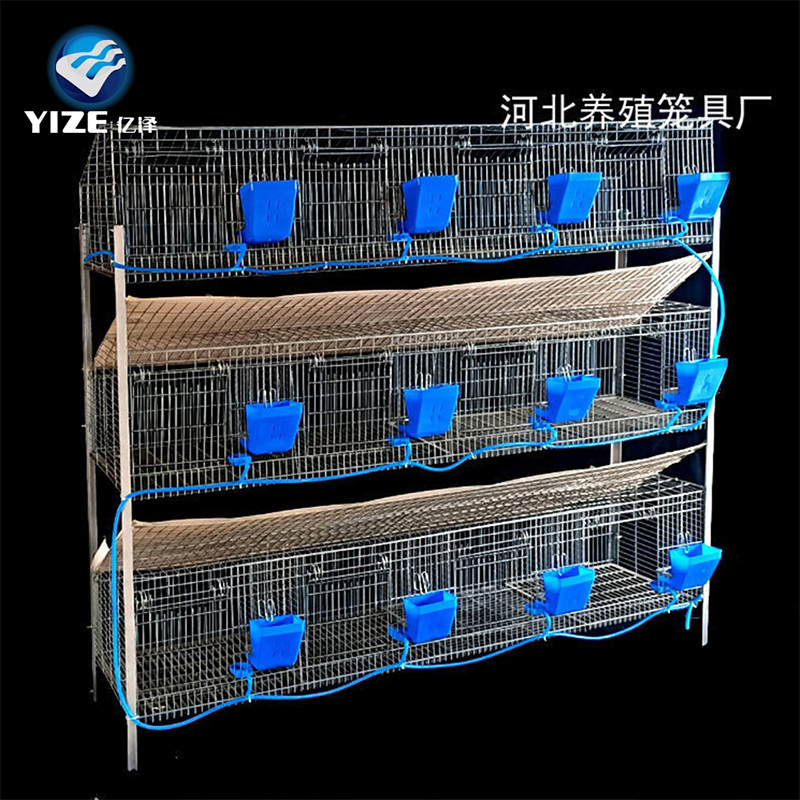Exploring the Benefits and Challenges of Cage-Free Poultry Farming Practices Today
Aug . 13, 2024 14:34 Back to list
Exploring the Benefits and Challenges of Cage-Free Poultry Farming Practices Today
Cage Poultry Farming An Overview
Cage poultry farming is a method of raising birds, primarily chickens, in confined spaces known as cages. This practice has garnered both support and criticism within the agricultural and animal welfare communities. Understanding the intricacies of cage poultry farming requires an exploration of its advantages, disadvantages, and its impact on the industry as a whole.
One of the primary advantages of cage poultry farming is the efficiency it provides. Cages allow for maximized space utilization, which is essential in commercial operations. This method facilitates more systematic management of the birds, including feeding, watering, and cleaning processes. Consequently, farmers can raise a larger number of chickens within a relatively small area, leading to higher production rates of eggs or meat. The controlled environment of cages can also help minimize the risk of diseases spreading among birds, which is crucial for maintaining a healthy flock and ensuring consistent productivity.
However, cage poultry farming has faced significant criticism regarding animal welfare. Critics argue that confining birds to cages restricts their natural behaviors, such as roaming, foraging, and socializing. Traditional battery cages, in particular, have been under scrutiny because they often provide minimal space for each bird, leading to stress and health issues. In response to global concerns about animal welfare, many countries and regions have been moving towards more humane standards for poultry farming, including the adoption of enriched cages that allow for more movement and nesting opportunities.
cage poultry farming

The shift toward cage-free systems is evident in consumer preferences as well. As consumers become more aware of animal welfare issues, there has been a growing demand for cage-free eggs and chicken. This shift has prompted many producers to reconsider their farming practices, investing in alternative systems that align with consumer values. Such systems can include barn systems, free-range, or pasture-raised options, which provide more freedom for the birds.
From an economic standpoint, transitioning from cage systems to cage-free alternatives can be challenging for some poultry farmers. The initial investment and ongoing operational costs can be higher in humane systems, which may affect profitability, particularly for smaller farms. Additionally, producers must navigate market fluctuations and consumer preferences, all while maintaining competitiveness within the industry.
Regulatory changes have also played a significant role in the future of cage poultry farming. Governments and international organizations are increasingly implementing stricter regulations concerning animal welfare. These policies are designed to enhance the living conditions for poultry, consequently leading to a gradual decline in traditional cage farming practices.
In conclusion, cage poultry farming presents a mixed bag of benefits and challenges. On one hand, it offers high levels of efficiency and productivity, crucial for meeting the global demand for poultry products. On the other hand, it raises significant ethical concerns regarding animal welfare, leading to a movement towards more humane farming practices. As consumer preferences evolve and regulations tighten, the poultry industry is likely to continue adapting to these changes. The future of cage poultry farming will depend on finding a balance between economic viability, animal welfare, and consumer demands, ultimately shaping the way poultry is produced and consumed worldwide.
-
Hot Sale 24 & 18 Door Rabbit Cages - Premium Breeding Solutions
NewsJul.25,2025
-
Automatic Feeding Line System Pan Feeder Nipple Drinker - Anping County Yize Metal Products Co., Ltd.
NewsJul.21,2025
-
Automatic Feeding Line System Pan Feeder Nipple Drinker - Anping County Yize Metal Products Co., Ltd.
NewsJul.21,2025
-
Automatic Feeding Line System - Anping Yize | Precision & Nipple
NewsJul.21,2025
-
Automatic Feeding Line System - Anping Yize | Precision & Nipple
NewsJul.21,2025
-
Automatic Feeding Line System-Anping County Yize Metal Products Co., Ltd.|Efficient Feed Distribution&Customized Animal Farming Solutions
NewsJul.21,2025






